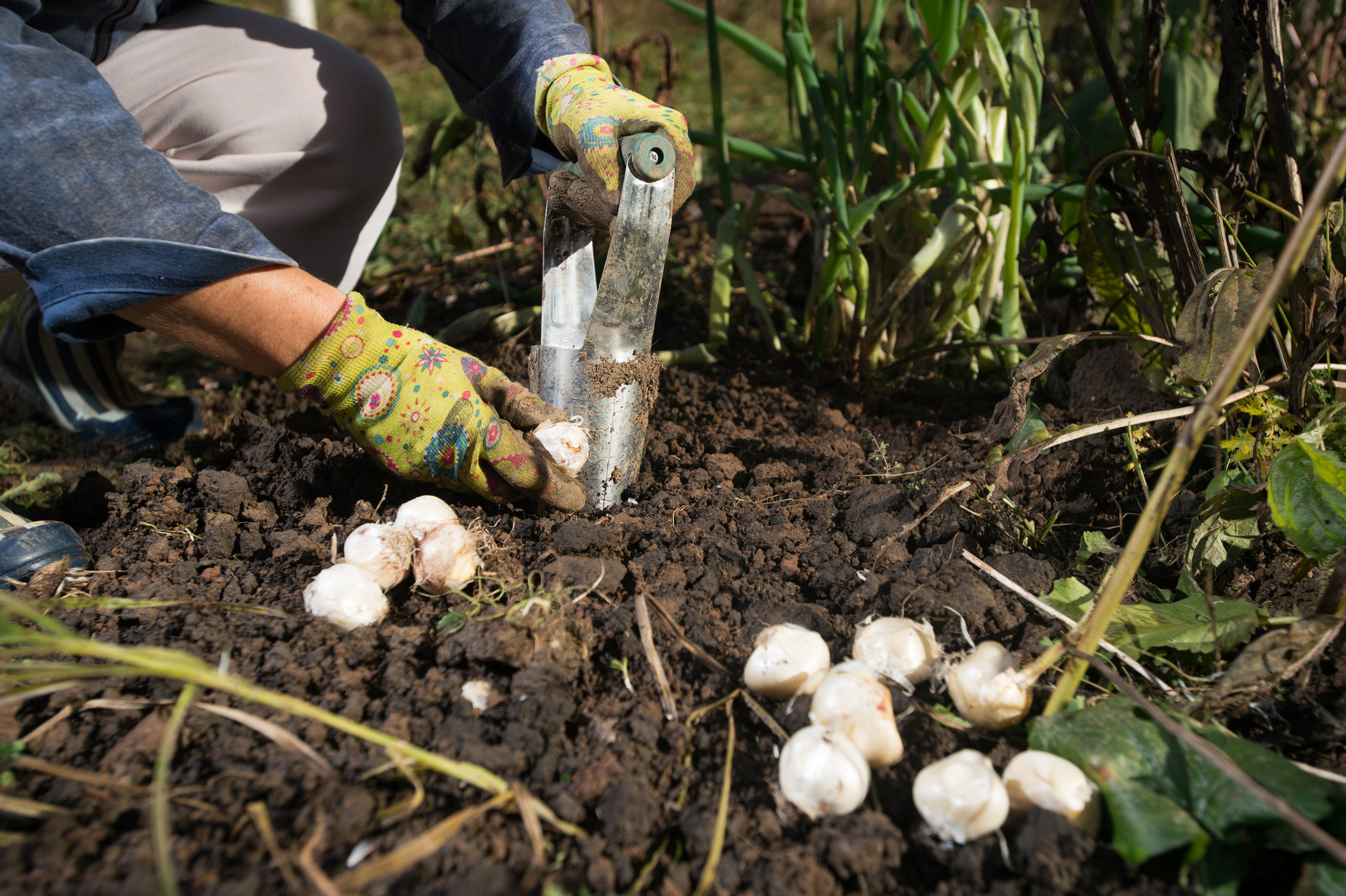There’s a distinct shift in atmosphere as late summer winds down – crisp mornings, the scent of last evening’s bonfire lingering in the air, and all things pumpkin and squash appearing on menus and in stores. Over the next few days, the Harvest Moon will also appear full signaling the autumnal equinox when day and night are roughly equal in length. As the leaves begin to change color from less exposure to sunlight, now is the time to plan for next year’s garden by ordering some bulbs for autumn planting.
According to the Farmers’ Almanac, it is best to plant fall bulbs when nightly temperatures are around 40 to 50 degrees Fahrenheit – roughly six weeks before the ground is expected to freeze. Bulbs that bloom later in the summer, like dahlias and gladiolus, should be planted in the spring.
For the best spring blooms, prepare the bulb bed well by weeding and loosening the soil and adding compost before planting bulbs. Try to choose a spot that will get at least six hours of sunlight each day; soggy areas can be amended with sand to improve drainage and prevent bulb rot. Once bulbs are planted, the cooler weather will keep them dormant for the fall and winter so they won’t need to be fertilized until the following autumn.
Older adults who no longer have access to a yard or garden can still enjoy growing flowering bulbs in containers on a deck, patio, or balcony. If you have deer or other critters in your yard, potting bulbs may be one of the best ways to keep them protected. But make sure any containers have drainage holes to prevent bulbs from rotting. Larger containers will hold enough soil to insulate bulbs in colder regions if bulbs are left outdoors in the winter. A garage or shed will protect bulbs in smaller vessels while still allowing bulbs to develop properly.
Learn more about planting flowering bulbs that will provide early spring color by following this link to Garden Therapy, and enjoy spending time outdoors this autumn.






Add Your Voice
0 Comments
Join the Discussion